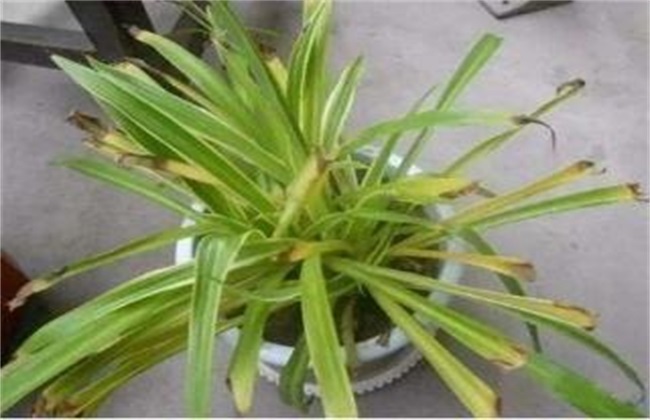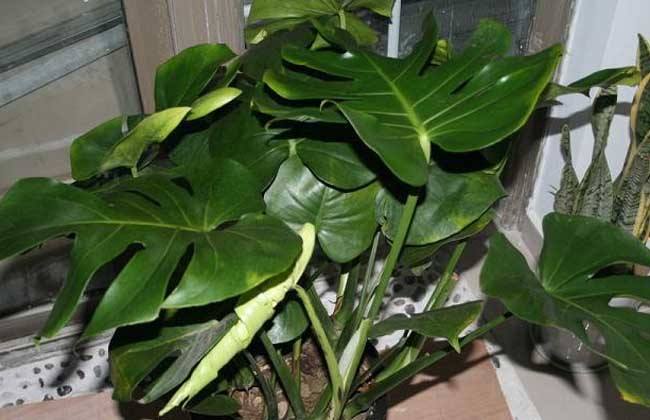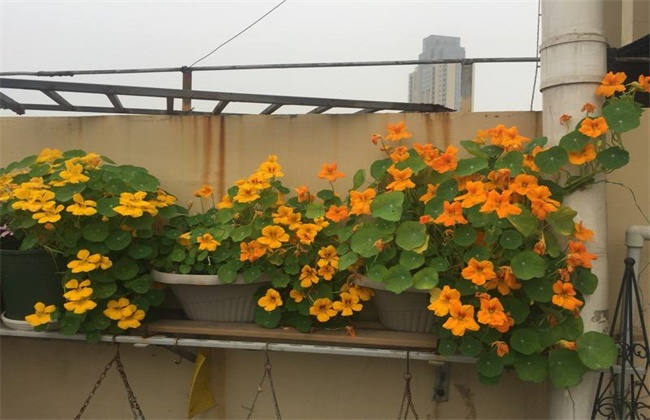What happened to the dry tip of the hanging orchid?
Cymbidium, also known as weeping pot grass, bluegrass and so on, is a kind of perennial herb evergreen plant of asparagus family. The plant of Cymbidium not only has great ornamental value, but also can be used to purify the air, and the whole plant has medicinal value. However, when we plant Cymbidium, we often encounter a lot of problems affecting the growth of Cymbidium, and the stem tip is one of them. So what's the matter with the dry tip of hanging orchid? Let's take a look at it.

1. Lighting reasons
Cymbidium is a very light-loving flower plant, which needs a lot of light in the process of growth. If the orchid is in a dark and weak light environment for a long time, then the leaves can not effectively carry out photosynthesis, resulting in insufficient nutrition accumulation, resulting in dry tip phenomenon, it is also possible that there is too much dust on the leaves, which also affects the photosynthesis of Cymbidium. Therefore, when we plant Cymbidium, we should not only pay attention to maintain the light time and intensity, but also pay attention to often clean the leaves, keep the leaves dry tip, so that the leaves can carry out normal photosynthesis, so that the dry tip phenomenon can be effectively reduced.
2. Improper fertilization
In the growth process of Cymbidium, fertilization is a way to provide growth nutrition for Cymbidium. But when we apply fertilizer, we must pay attention to control the amount of fertilizer, if we apply too much fertilizer, then because the orchid can not be absorbed completely, the remaining fertilizer burns the roots in the soil and affects the absorption of nutrients. Lead to leaf dry tip, but not long-term non-fertilization, long-term non-fertilization, hanging orchid will also be due to lack of nutrition, leading to leaf dry tip. Therefore, we need to have a reasonable method of fertilization, usually about once every ten days or so.
3. Improper watering
Water is an indispensable substance in the whole growth period of Cymbidium. Cymbidium likes to grow in a humid environment, when watering, if the amount of watering is too little, the soil is too dry, and the roots are unable to absorb water, which naturally leads to the dry tip of the leaves. However, watering should not be too much, too much watering is easy to cause waterlogging, but also very easy to cause the same phenomenon. Therefore, in the growth of Cymbidium, we should reasonably water to ensure that the soil has a certain water content, when there is a drought phenomenon, we should timely watering, to ensure to meet the growth of water requirements at the same time, to avoid stagnant water.
4. The humidity is too low
The hanging orchid also has certain requirements for air humidity, because the air is also a main way for the leaves to absorb water. If the air humidity is too low and the water is not sprayed regularly, it will affect the water absorption of the leaves. As a result, the leaves will gradually appear dry, dry tip and other phenomena. Therefore, when we plant, we should pay attention to regularly spray water on the leaves to improve the glossiness of the leaves, and spray water properly around the plant to maintain air humidity. Then should be properly ventilated, so that air circulation, can alleviate the phenomenon of dry tip of the blade.
The above is a brief introduction to what happened to the dry tip of the hanging orchid. This is the end of today's introduction, this article is for reference only, I hope it can be helpful to everyone!
Related
- Fuxing push coffee new agricultural production and marketing class: lack of small-scale processing plants
- Jujube rice field leisure farm deep ploughing Yilan for five years to create a space for organic food and play
- Nongyu Farm-A trial of organic papaya for brave women with advanced technology
- Four points for attention in the prevention and control of diseases and insect pests of edible fungi
- How to add nutrient solution to Edible Fungi
- Is there any good way to control edible fungus mites?
- Open Inoculation Technology of Edible Fungi
- Is there any clever way to use fertilizer for edible fungus in winter?
- What agents are used to kill the pathogens of edible fungi in the mushroom shed?
- Rapid drying of Edible Fungi



